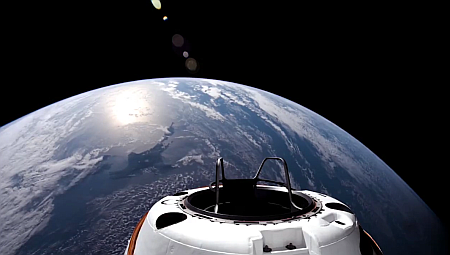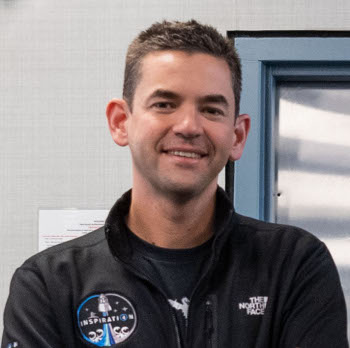Resilience splashes down safely, ending Polaris Dawn commercial manned orbital mission
SpaceX’s Resilience capsule has just splashed down safely in the Gulf of Mexico, ending the five-day Polaris Dawn private manned orbital mission, commanded by billionaire and jet pilot Jared Isaacman.
As of posting the capsule is still in the water with divers and boats on the way.
This completes the first mission in Isaacman’s planned three mission Polaris program. It was a complete success, doing a great deal of medical research on the effects of high orbit radiation on the human body as well as the first private spacewalk using SpaceX’s first EVA spacesuits. For Isaacman’s next mission he has already proposed doing a Hubble repair mission. NASA has had mixed feelings about this idea, but after this success it will be interesting if that attitude changes.
I must comment that the coverage by SpaceX employees on this mission was somewhat annoying. For the first time, they spent a lot of time giggling and focusing on PR and how “cool” and “incredible” and “wonderful” everything was, from amusing new decals in the capsule to the spacewalk to Sarah Gillis’ violin performance.
All of this was as great as they kept saying, which is why they didn’t need to say it, over and over and over and over and over again. It would have been better if they had done what SpaceX has generally done on previous broadcasts and missions, focused on describing the technical aspects and then staying silent otherwise. Gushing like this is more like a NASA or Blue Origin broadcast, and does not do SpaceX credit.
SpaceX’s Resilience capsule has just splashed down safely in the Gulf of Mexico, ending the five-day Polaris Dawn private manned orbital mission, commanded by billionaire and jet pilot Jared Isaacman.
As of posting the capsule is still in the water with divers and boats on the way.
This completes the first mission in Isaacman’s planned three mission Polaris program. It was a complete success, doing a great deal of medical research on the effects of high orbit radiation on the human body as well as the first private spacewalk using SpaceX’s first EVA spacesuits. For Isaacman’s next mission he has already proposed doing a Hubble repair mission. NASA has had mixed feelings about this idea, but after this success it will be interesting if that attitude changes.
I must comment that the coverage by SpaceX employees on this mission was somewhat annoying. For the first time, they spent a lot of time giggling and focusing on PR and how “cool” and “incredible” and “wonderful” everything was, from amusing new decals in the capsule to the spacewalk to Sarah Gillis’ violin performance.
All of this was as great as they kept saying, which is why they didn’t need to say it, over and over and over and over and over again. It would have been better if they had done what SpaceX has generally done on previous broadcasts and missions, focused on describing the technical aspects and then staying silent otherwise. Gushing like this is more like a NASA or Blue Origin broadcast, and does not do SpaceX credit.



